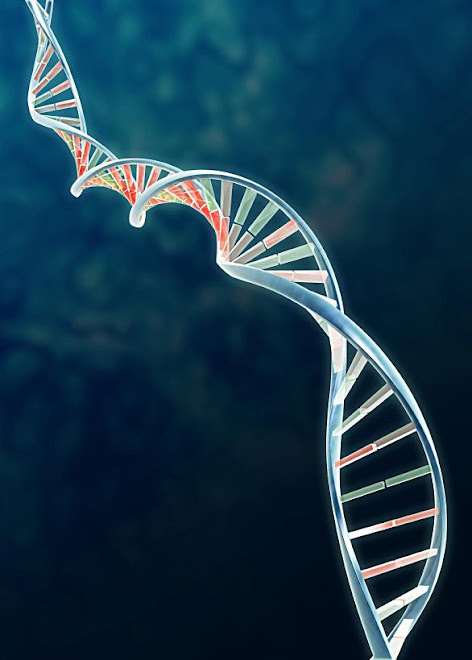DNA sequencing reactions are just like the PCR reactions for replicating DNA (refer to the previous page DNA Denaturation, Annealing and Replication). The reaction mix includes the template DNA, free nucleotides, an enzyme (usually a variant of Taq polymerase) and a 'primer' - a small piece of single-stranded DNA about 20-30 nt long that can hybridize to one strand of the template DNA.
Automated sequencing gel: That's exactly what we do to sequence DNA, then - we run DNA replication reactions in a test tube, but in the presence of trace amounts of all four of the dideoxy terminator nucleotides. Electrophoresis is used to separate the resulting fragments by size and we can 'read' the sequence from it.
A DNA molecule carries information in the form of four chemical groups or bases, represented by the letters A, C, G and T. The order of bases on a DNA strand is the DNA sequence.
Most DNA sequencing is carried out using the chain termination method. This involves the synthesis of new DNA strands on a single stranded template and the random incorporation of chain-terminating nucleotide analogues.
The chain termination method produces a set of DNA molecules differing in length by one nucleotide. The last base in each molecule can be identified by way of a unique label. Separation of these DNA molecules according to size places them in the correct order to read off the sequence.
Sequencing is achieved by including in each reaction a nucleotide analogue that cannot be extended and thus acts as a chain terminator. Four reactions are set up, each containing the same template and primer but a chain terminator specific for A, C, G or T. Because only a small amount of the chain terminator is included, incorporation into the new DNA strand is a random event. Each reaction therefore generates a collection of fragments, but every DNA strand will end at the same type of base (A, C, G or T).
The primers or nucleotides included in each of the four reactions contain different fluorescent labels allowing DNA strands terminating at each of the four bases to be identified. The reaction products are then mixed and separated by gel electrophoresis, which separates DNA molecules according to size even if they differ in length by only a single nucleotide. As the DNA strands pass a specific point, the fluorescent signal is detected and the base identified. The whole process can be extensively automated.
skip to main |
skip to sidebar

dna sequencing technology
Next generation dna sequencing techniques,,DNA Sequencing Principle and methods

dna sequencing technology